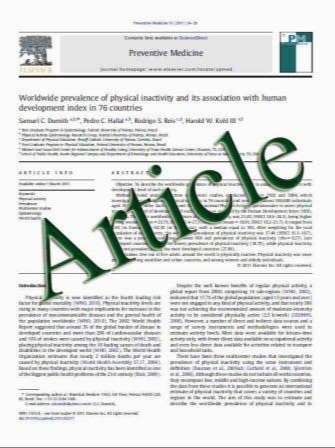Incidence of hydrocephalus and the need to ventriculoperitoneal shunting in premature infants with intraventricular hemorrhage: risk factors and outcome
- نوع فایل : کتاب
- زبان : انگلیسی
- مؤلف : Shahin Behjati & Parisa Emami-Naeini & Farideh Nejat & Mostafa El Khashab
- چاپ و سال / کشور: 2011
Description
Objective To investigate the associated risk factors for ventriculoperitoneal (VP) shunting in infantile hydrocephalus following intraventricular hemorrhage (IVH) in premature infants. Methods A historical cohort study was conducted, consisting of 97 premature infants in whom the diagnosis of IVH was previously made by cranial ultrasound and were referred to pediatric neurosurgery clinic and/or neonatal intensive care unit of Children's Hospital Medical Center in Tehran, Iran, from April 2004 to March 2009. Among the patients, those who were followed up for at least 6 months after the diagnosis of IVH were included in the study, and data regarding signs and symptoms of increased intracranial pressure, cranial ultrasound, non-surgical treatment (CSF drainage and/or acetazolamide), and shunt requirement were extracted. Patients who required VP shunting were followed up for at least 6 months thereafter considering shunt infection. Results All the patients were followed up for at least 1 year, except for three who died at the ages of 6 (two of them) and 7 months. Thirty five percent (35%) of patients required VP shunting, in all of whom IVH was of grade 3 or 4. The need for VP shunting in these patients was predicted only by the severity of IVH. Non-surgical treatments for IVH had no statistically significant effect on shunt requirement. Moreover, 11 of 31 patients with shunt developed shunt infection, which was significantly associated with repeated cerebrospinal fluid (CSF) drainage. Conclusion It is suggested that children with IVH, especially of higher grades, should be followed up meticulously (by signs, symptoms, and periodic cranial ultrasounds). Non-surgical treatments are considered for patients requiring VP shunting who are not good candidates for immediate surgical intervention. The only predictor for surgical intervention was the grade of IVH.
Childs Nerv Syst (2011) 27:985–989 DOI 10.1007/s00381-010-1387-4 Received: 29 December 2010 / Accepted: 30 December 2010 / Published online: 14 January 2011


